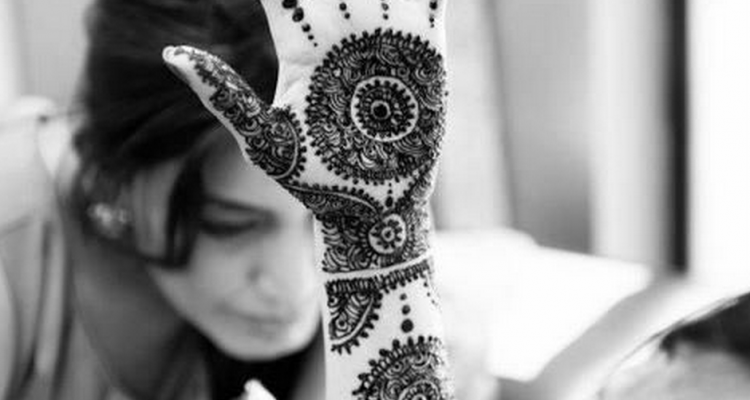One of the ceremonies many brides-to-be and their young friends look forward to most is the mehendi, without a doubt. And though the art of mehendi is an ancient one that goes back centuries, it’s also become a bit trendy — not only is it a major ceremony in North Indian weddings, it’s caught the fancy of brides across the country and even abroad. The mehendi ceremony usually takes place one or two days before the wedding at the bride’s place.
But with mehendi ceremonies growing bigger each passing year, the ladies and unmarried girls from both sides (bride and groom) gather well in advance at a chosen venue, where the bride’s hands and feet are gorgeously adorned. Not to be left out, guests often seize the chance to decorate their hands with intricate mehendi designs, too.
See Also Wedding Band Tattoos | Should Brides Cover Tattoos for the Wedding? | The I Do Tattoo
Traditionally, the future mother-in-law’s responsible for sending the mehendi artist to adorn the bride’s hands. In the punjabi community, it’s believed that if the henna leaves a dark eye on the bride’s hands, she’s sure to enjoy great affection from her mother-in-law.
So to ensure that the mehendi is rich and dark, brides often adopt some special techniques. For example, they start with the best mehendi power available: since the powder of Sorjatt in Rajasthan is considered the purest, it’s highly sought-after. Then, to try to preserve the results, the bride’s friends or family often heat up some cloves on tava, and touch the warmed cloves to the bride’s palms. It’s also not uncommon for brides to periodically apply a combination of lemon and sugar to the designs — it’s supposed to ensure a richer, longer-lasting color.
Other common tricks of the trade are to heat mehendi-decorated hands over the stove, or to treat them with tiger balm — because tiger balm is known for its heating properties, which brides hope will make the mehendi darken (and last). Once the mehendi dries, experts recommend scrubbing it with coconut oil. They also suggest you keep your hands dry for at least 24 hours.
Even the Old Ways Change
In old days, a relative or close friend used to apply the bride’s mehendi, while married matrons sang songs wishing the new couple a happily married life. But things have changed!
Professional mehendiwalis have taken over for amateur relatives … just as elaborate sangeet ceremonies featuring innovative dance sequences and sleek, professional choreography has replaced the more home-grown entertainment of the past.
In fact, today’s mehendi ceremony is often flanked by a grand spread of delicious dishes — to the delight of invitees! And families who want to fold even more opulence into the proceedings even send out separate invitations to friends and relatives for the pre-wedding mehendi function.
Although traditional designs involving a baraat, dulha-dulhan, doli-shehnai and so on haven’t gone by the wayside, many of today’s Indian brides prefer either Arabic mehendi or zardozi, as well as studded designs that match their wedding dress.
Thanks to the all-pervasive influence of popular films and TV shows, not to mention music videos that popularize fashionable mehendi ceremonies, the art of mehendi has expanded to incorporate semi-precious stones and colored dye, carefully chosen to complement the bridal attire.
See Also Wedding Band Tattoos | Should Brides Cover Tattoos for the Wedding? | The I Do Tattoo
The Art of Instant Mehendi: Temporary Tattoos!
For those hard-pressed for time, instant mehendi in the form of temporary tattoos is taking off. Tattoos in loud and novel colors like silvery-gold, shocking red, navy blue or green are showing up in previously unthinkable (but fashionable) places such as the face or neck, navel or waist, back or foot. Unusual motifs such as dragons and scorpions, snakes, suns and crystal tattoos are increasingly popular, too.
But if you’re a stickler for tradition and want real henna for your hands, be mindful of the marriage season. December to February is the busiest time of the year for mehendiwallis, and you’ll find their professional skills greatly in demand (and their calendars booked solid). Book the best one in town well ahead of time.


